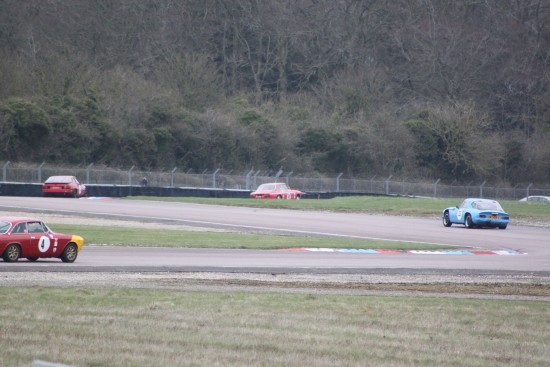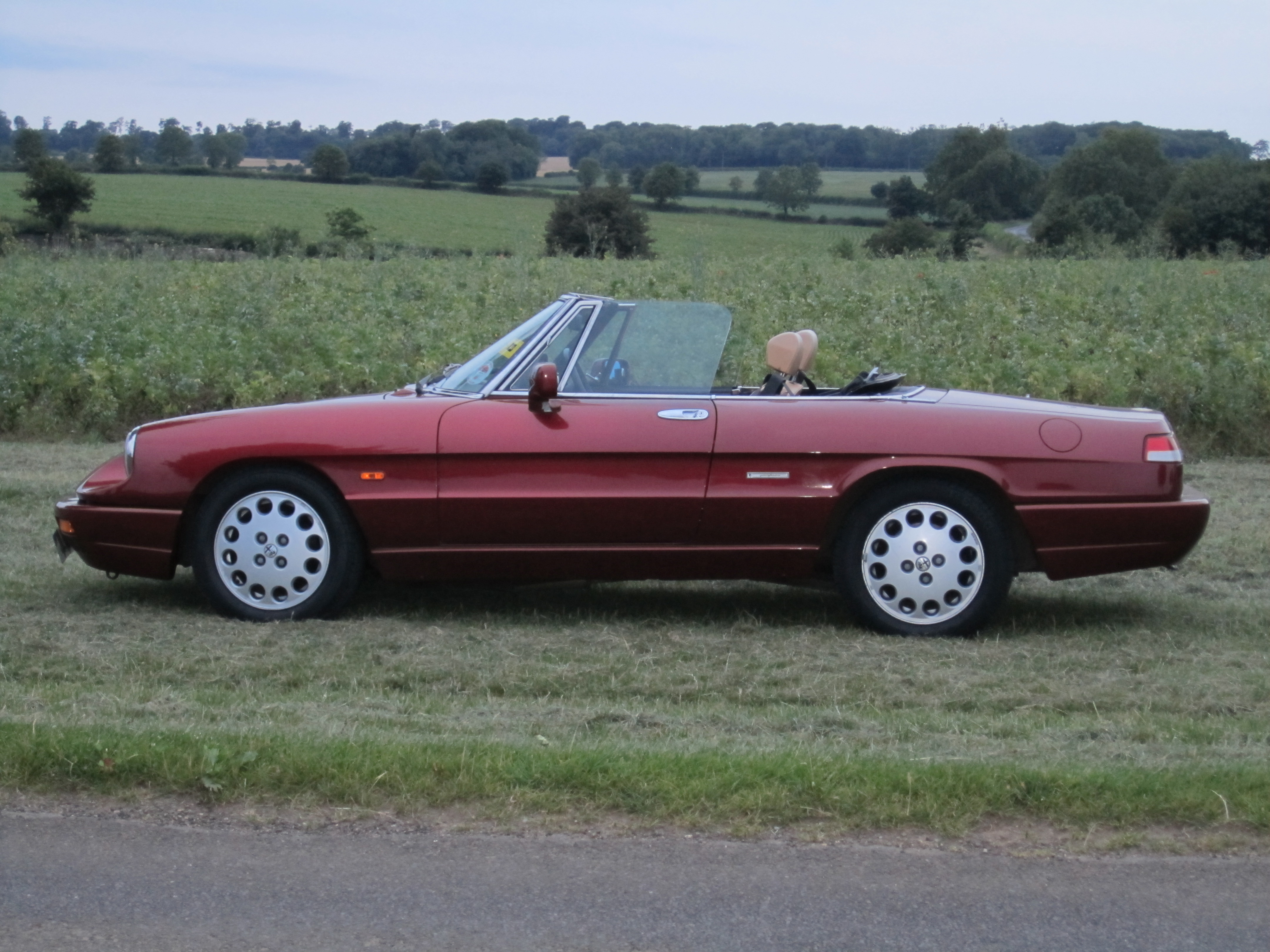
For us of course that meant driving a classic, our 1977 TVR 3000M, in the HSCC 70s Roadsports but the lessons we learned can be more widely applied and so whatever your interest read on to find out all about our First Year Circuit Racing (Cover Shot – Charlie Wooding)
ARDS Test
Before you can even think of competing in your First Year Circuit Racing you’ll need to get a race licence and in the UK under the direction of the Motor Sports Association (MSA) that means taking an Association of Racing Driver’s Schools (ARDS) test. Cost is around £300 for the basic half day course or for an extra £200-£300 you can have a full day that includes driver tuition as well. Given my previous experience of Hillclimbs (2 years), Sprints (13 years) and Stage Rally (3 years) I opted for a half day ARDS at Silverstone where on the day we used the southern loop including the long and fast Hangar Straight. Oh and it was raining.
Prior to arriving I had been given the distinct impression that this test was more about remembering the meaning of flags rather than driving quickly. That wasn’t quite the case, true we did sit the written test in exam conditions which included one aspect that made me think; being whether each flag would be waved or held out flat. A few corrections later and I did enough to pass. Out on track in one of the circuit’s Toyota GT86’s, with traction control switched off I hasten to add, and I was being encouraged to drive very quickly indeed whilst avoiding sliding off altogether resulting in a fail. After a nervy first session I had a sausage bap, calmed down a bit, before going for it to ultimately get the signature I needed. All I can say is our First Year Circuit Racing was already proving to be an experience.
The cost of ARDS includes your first year’s licence, although as someone aged 45 and above, I also needed to get a medical from my Doctor which cost an additional £100. It is worth doing this January/ February time because it can also then be used to renew your licence the following year as long as the gap is less than 12 months (medical and ARDS need to be within three months of each other).

Car and Driver Preparation
You and your car like me and our car will need to comply with the MSA Year Book or Blue Book that contains all the rules for well everything really. Not the easiest publication in the world to navigate and understand and so the only advice really is to contact your nearest National A Scrutineer and get them to inspect the car plus any safety equipment you already have and write you a to-do list. Ours had a roll cage and seat fitted already, which helped and I already had a current helmet, gloves and overalls.
All of which meant we had to get race shoes, plus HANS® device and new helmet for 2016, in-date harness and new plumbed-in fire extinguisher. The old extinguisher, although serviceable, just looked like it would cause an issue at scrutineering each time. It goes without saying only buy safety equipment from a reputable source and for your helmet, overalls, HANS® device, gloves and shoes spend as much as you can afford budgeting as a minimum £1,000. I made the mistake of buying a harness on a well known auction site which after they wrote to me is now with Trading Standards as evidence in a prosecution case as despite its apparent authenticity, it was in fact a fake and not safe to use. Lesson learned there.

Testing
If you’re experienced at track days then testing won’t come as much a shock as it did for me having mainly sprinted of late with only one car on track at a time. Our first event was at Thruxton on Easter Sunday (2015) and so we duly tested there beforehand on Good Friday, oh yes and it was raining again. Just to add to the fun our first session was cut short after a car hit the barrier at Church. This is not what you want to see. Session two went the distance and I left on the Friday to buy the biggest race mirror I could find before returning Sunday. You see we shared that second session with classic Le Mans cars that appeared to fly past underneath meaning during those 20mins I learned to look out for and trust in blue flags, as long as they were being waived a car was close, whether visible or not. That I have to say proved a valuable lesson for the rest of our First Year Circuit Racing.
First Event
With the new mirror fitted and car ready to go out again then arriving at Thruxton on the Easter Sunday morning was a fairly relaxed affair. I had prepared a checklist that helped ensure everything we needed was packed. I am a bit of a checklist fan and if nothing else if they do prompt you to remember things like your race licence and safety equipment whilst not forgetting fuel, oil and other important bits and pieces and so surely a good thing. On arrival you sign-on, get scrutineered, and wait to be called for practice. All cars used for circuit racing must have working rear lights, including brake, tail and a regulation sized fog light. Sounds straight forward enough but in our First Year Circuit Racing caught us out time and again.
On the TVR loose wiring meant after being bounced around on the trailor they quite often didn’t work which was a right faff each time. Having tie wrapped the rear loom firmly in place they have since proved 100% reliable, an easy fix that makes life far less stressful early in the morning and on one occasion, yes you guessed it, whilst it was pouring down with rain. We also need to hire a Timing Chip from the timekeepers each time at a cost of £20.00. No chip, then no time. They do however take your race licence as a deposit and so really important to remember to return it before you go home. Buying a chip is quite expensive and so hiring far cheaper to start with at least.

Practice
This is clearly an important part of the day, but not the race itself, therefore far better to find some clear air out on track and put in a nice clean lap rather than get held up everywhere. In practice you end up closer to the latter as your racing instincts kick in. It is also a great opportunity to observe how others, especially anyone travelling quicker than you, are piecing together their lap. All you can do is the best you can and when the results are published take pride if you’ve done well, but don’t get too disheartened if you haven’t, it’s not the race after all.
The Race Itself
This is it, this is what you came to do in your First Year Circuit Racing and once again between practice and the race itself a checklist can prove valuable in ensuring you remember to check fluid levels, re-fuel the car and remove the fire extinguisher pin once again. When you sit on the grid for the first or even sixth time there will be nerves, which is completely understandable. If you qualified well then you should be confident of doing well. If not then look out for opportunities to overtake, the start is one but also green flags marking the end of a safety car or yellow flag incident can provide others. There are also positions to be gained if cars suffer mechanical issues, which for classics at least can occur on a regular basis, just make every effort beforehand to ensure it’s not you.
Whether twenty minutes or longer once into your stride you are now hopefully battling with others out on track. This is without doubt the best bit and as you learn how your main rivals drive their cars you can gradually position yourself closer and closer to them without fear of swapping paint at every turn. This might be a feature of HSCC 70s Roadsports but in our First Year Circuit Racing everyone drove firmly but fairly and I never finished a race feeling angry with anyone else at all. Of course it helps the paddock is so friendly.
(Racing cost on average £300 for the entry fee plus; trailer hire, accommodation, fuel and other consumables, translating to around £500-£600 per event for either one or two rounds).

Friendly and Helpful Paddock
In our First Year Circuit Racing we got helped at every step of the way and received advice everywhere we went. That included practical things like getting the car off the trailer but also how to re-position the fuel tank to get the right head of pressure over the pumps and what brake fluid and brake pads to use. During our First Year Circuit Racing we learned much, were helped a lot and overall had a fantastic time with a great bunch of people, but is there anything we would do differently next time?
If we had our time again
The car we bought in reality wasn’t quite ready and so professional help might have pre-empted some issues. We also bought tyres better suited to damp conditions than dry that tended to go off towards the end of each race. Looking around the paddock people had both decent wet and dry tyres available to them and so unless caught out were always on the best rubber available. The lead cars and drivers are very quick and being honest it is possible we will never match either. Therefore with what we’ve spent and the fact we always end up having a good race with someone, on reflection, there isn’t much I would change no.
———
That’s our view now share yours. Simply add your feedback below, or tell us what else you would like to see featured using the Online Form
Also did you know that by simply pressing the Facebook Like or Google+ buttons below, it not only lets your friends know you like something, it also makes it easier for them to find in the future themselves as well.




Be the first to comment